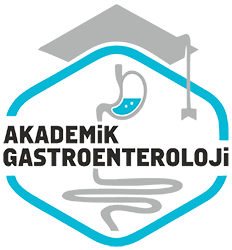Agustos 2013
Alt gastrointestinal sistem kanamalarinda tedavi yönetimi: Cerrahi ve minimal invaziv tedavi yöntemlerinin irdelenmesi
Therapeutic management of lower gastrointestinal bleeding: Comparison of surgery and minimally invasive treatment modalitiesy
- Ana Sayfa
- Sayılar
- Agustos 2013
- Alt gastrointestinal sistem kanamalarinda tedavi yönetimi: Cerrahi ve minimal invaziv tedavi yöntemlerinin irdelenmesi...
Özet
Giriş ve Amaç:Alt gastrointestinal sistem kanamalari, Treitz ligamani-nin distalindeki gastrointestinal sisteme ait patolojilerden kaynaklanir. Bu çalışmada klinigimizde, akut alt gastrointestinal sistem kanaması nedeniyle acil cerrahi uygulanan ve non-operatif takip edilen Hastaların preoperatif ve postoperatif dönemdeki verilerinin ve izlem verilerinin irdelenmesi amaçlandi. Gereç ve Yöntem: Ege Üniversitesi Tıp Fakültesi Hastanesi Genel Cerrahi Anabilim Dalinda alt gastrointestinal sistem kanaması nedeni ile takip ve operasyon uygulanan 29 hasta ve opere edilmeden medikal izlem ile takip edilen 23 hasta retrospektif olarak incelendi. Incelemeye dahil edilen parametreler; başvuru şikayeti, muayene bulgulari, görüntüleme yöntemleri, operasyon bulgulari, morbidite, mortalite olarak belirlendi. Bulgular: Nisan 2008–Nisan 2012 tarihleri arasında alt gastrointestinal sistem kanaması tanısı alan 52 hasta retrospektif olarak incelendi. Acil cerrahi uygulanan grupta ortalama yaş 62,4 olarak belirlendi. Bu grupta; 12 (%41,3) hasta kadın, 17 (%58,7) hasta ise erkek idi. Non-operatif takip grubunda ise ortalama yaş 64,9, 7 (%30,4) kadın, 16 (%69,6) hasta ise erkek idi. Mortalite orani opere edilen grupta %10,3 (3 hasta), non-operatif takip grubunda ise %8,7 (2 hasta) olarak belirlendi. Sonuç:Akut alt gastrointestinal sistem kanamalarinin tedavisinde kolonoskopik hemostaz teknikleri güvenli ve yaygin bir şekilde kullanilabilmektedir. Masif kanama sonucu mortalite orani yaklasik %10-15 olduğundan, olabildigince hizli bir şekilde kanama odagi tespit edilerek müdahale edilmelidir. Alt gastrointestinal sistem kanamalarinin %80-90’i spontan olarak ya da konservatif önlemlerle durmaktadır. Kolonoskopik veya anjiografik yöntemlerle kontrol altina alinamayan kanamalarda cerrahi Girişim endikasyonu vardır ve operasyon karari geciktirilmemelidir.
Abstract
Background and Aims:Lower gastrointestinal system bleeding is caused by gastrointestinal pathologies from the distal ligament of Treitz. In this study, we aimed to determine the preoperative and postoperative period data of patients who underwent emergency surgery and the follow-up data of those patients who were followed non-operatively because of lower gastrointestinal system bleeding. Materials and Methods: Twenty-nine patients who were followed and operated because of lower gastrointestinal system bleeding and 23 patients who were followed with medical treatment without operation in Ege University Medical Faculty Hospital, Department of General Surgery, were analyzed retrospectively. The parameters included in the examination were as follows: initial complaint, clinical findings, imaging studies, operative findings, morbidity, and mortality. Results:Fiftytwo patients were analyzed retrospectively with the diagnosis of lower gastrointestinal system bleeding between April 2008 and April 2012. The mean age was determined as 62,4 years in the operated group. In this group, 12 (41,3%) patients were female and 17 (58,7%) were male. In the non-operative follow-up group, the mean age was 64,9, and 7 (30,4%) were female and 16 (69,6%) were males. The mortality rate was determined as 10,3% (3 patients) in the operated group and 8,7% (2 patients) in the non-operative follow-up group. Conclusions: Colonoscopic hemostasis techniques were used safely and widely for the treatment of lower gastrointestinal system bleeding. The mortality rate is about 10-15% as a result of massive bleeding; the bleeding site must be identified and treated as quickly as possible. 80%-90% of lower gastrointestinal system bleeding stop spontaneously or with conservative measures. If bleeding cannot be controlled by colonoscopic or angiographic methods, surgical intervention is indicated, and the decision to operate should not be delayed.



